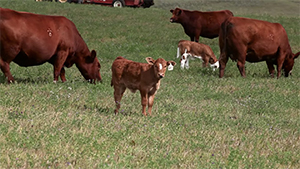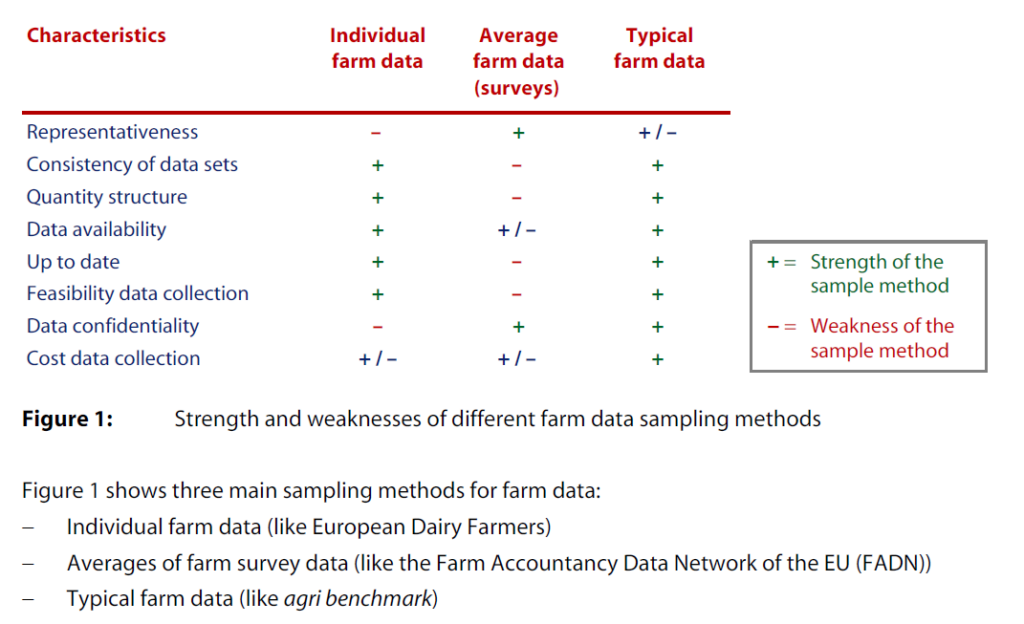A New Approach to Cost of Production Benchmarking
This is Part Three of a three-part series (see Part One and Part Two).
Editor’s note: this article is also available in French. Download the translated version here.

When getting a clear financial picture for your operation, basic record keeping often isn’t enough. That’s why it’s essential to know your cost of production.While many aspects of the industry are uncertain, thankfully there is the opportunity to examine what can be, for the most part, controlled – your cost of production. As a producer, the ability to measure and manage those components of your operation that are within your control is a powerful tool. Why not take advantage of that tool by signing up to participate in an upcoming focus group?
The Canadian Cow-Calf Cost of Production Network (CDN COP Network) will develop benchmarks for specific production systems and ecoregions across the country. Scenarios will be developed for what future farms could look like utilizing the 5% Rule to identify where incremental improvements could be made around productivity, input costs, and output prices. Each production system will have its own set of limitations and opportunities where greater focus may be beneficial.
Differences in production systems are about different management practices and the trade-offs that producers are willing to accept. This means that the number of production systems are almost as varied as the number of producers making those choices. Imagine two mixed beef and grain operations. Operation A calves in January so that they are free to focus on seeding in April and May. They are weaning 750 lb calves in October and using a confined winter-feeding system to facilitate calving. In contrast, Operation B calves in April and needs to have enough labour to handle both calving and seeding. They are weaning 500 lb calves in November.
Producers participating in CDN COP Network focus groups will be encouraged to network as a way to support achieving future farm goals over the next three to five years. Networks are a powerful tool for both learning and accountability. They create a group of people who can brainstorm new areas of innovation and help troubleshoot when implementation of a new practice maybe isn’t going as planned. While the network will primarily benefit those who are directly involved; the benchmarking and lessons learned in community through the network will also support industry competitiveness by fostering a mindset that values continuous improvement through exploration of new innovations and management practices.
Different ways to collect data
There are different ways to collect cost of production data. The method that most producers are familiar with is individual data collection. This is used by AgriProfit$ in Alberta and historically was the base for CowProfit$ in Saskatchewan (data was last collected in 2012).
Individual data collection through an interview allows researchers to collect detailed accounts of participants. Providing thorough and complete data, individual interviews can help build consistent and detailed data sets. The interview process can also illuminate what aspects of the research are of particular relevance to the participant and can help design targeted response plans.
The collection of individual data can be both relatively time consuming and expensive (Boyce and Neale 2006). This process may not be possible in all regions and may reduce the amount of data that can be gathered, limiting the ability of researchers to make comparisons. While individual farm data allows researchers to confidently gather accurate data, unless farms are selected from a carefully designed random sample, the potential to extrapolate from a small group of farms to a broader group is limited (Feuz and Skold 1992). Additionally, there are no opportunities for networking or information sharing between participants to occur (Rabiee 2004).
Using averages from survey data, while the least intrusive for producers, also creates the greatest challenges in terms of data quality, consistency, robustness, and detail necessary for calculating cost of production. For these reasons, surveys which are effective in other situations are rarely used to collect cost of production data.
The CDN COP Network will be developing 26 “typical” farms utilizing focus groups (consisting of five to six producers in each focus group) and consensus-based data collection.
Consensus-Based Data Collection
Used in several different research fields, the consensus-based data collection approach utilizes focus groups to collect data from multiple individuals simultaneously. This approach can be more economical and efficient for obtaining data from multiple participants than individual interviews (Krueger and Casey, 2000). Focus groups can generate large amounts of data in a relatively short time span and these insights can be used as the basis for a more comprehensive discussion (Guba and Lincoln, 1994; Orr 1992). However, the group approach to data collection may reduce specific details on a participant that the researcher is able to collect (Kruger 1994).
In order to get the best possible results from focus groups, producers participating in the CDN COP Network are being asked to fill out a sign-up survey outlining different aspects of their production system and ecoregion. This ensure groups will have some similarities and focus when they meet. The group needs to be large enough so that a variety of perspectives can be included without being difficult to manage and not so small that it becomes fragmented (Robson 2011).
The willingness of all participants to engage in the discussion and disclose information is instrumental in generating useful data. The goal is to establish what a “typical” farm or farms might look like in a particular region using the data collected from the focus group. This is done by focusing on structural elements (e.g. calving date, weaning date, typical sale dates, winter feeding practices) that do not change significantly from year to year. This reduces response burden for producers as cost of production will be estimated annually using publicly available input and output prices. Focus groups are only needed every five years to capture any major operational changes such as herd size or common production practices.
Both individual and focus group data collection allow opportunities for researchers to build personal connections and develop rapport with the participants which is not possible through surveys.
The focus group data collection approach offers a number of benefits both in terms of efficiency and cost, but also in terms of being able to collect data on different production systems across varied regions. Furthermore, this data can also be used to make predictions about what future production systems may look like if different variables, like production practices, change.
Sample size challenges
All data collection methods have challenges regarding representational sample sizes. Focus groups allow for the selection of a larger sample of producers with similar production systems in order to be able to publish a benchmark that will be useful industry.
The Canadian Cost of Production Network
Data collection is scheduled for January to March 2021, provided that small groups of ten people can meet safely in the province. We are looking for 156 producers to sign up; there will be a $500 honorarium for each farm participating.
The CDN COP Network is going to provide the baseline data for the Canadian Roundtable for Sustainable Beef’s updated economic assessment of the Canadian beef industry. Therefore, anyone who signs up will not only be benefiting from the networking opportunity for their own operation but also contributing to this industry commitment as we learn from each other.
Don’t miss this opportunity! Sign up now to participate in an upcoming focus group.
- References
- Basson, C. 2017. A financial analysis of different livestock management approaches within different crop rotation systems in the Middle Swartland. M.Sc. diss. Stellenbosch Univ., Stellenbosch, South Africa.
- Bosma, Roel H.; Roothaert, Ralph L.; Asis, P.; Sanguinhon, J.; Binh, L.H.; Yen, V.H. 2003. Economic and social benefits of new forage technologies in Mindanao, Philippines and Tuyen Quang, Vietnam. Centro Internacional de Agricultura Tropical (CIAT), Manila, PH. 91 p. (CIAT working document no. 191)
- Boyce, Carolyn, and Palena Neale. “Conducting in-depth interviews: A guide for designing and conducting in-depth interviews for evaluation input.” (2006).
- Brüggemann, Daniel. (2011): Anpassungsmöglichkeiten der deutschen Rindermast an die Liberalisierung der Agrarmärkte. Johann-Heinrich von Thünen-Institut, Braunschweig.
- Coulter I, Elfenbaum P, Jain S, et al. SEaRCH expert panel process: Streamlining the link between evidence and practice. BMC Res Notes 2016;9:16.
- Deblitz, C., T. Hemme, F. Isermeyer, R. Knutson, D. Anderson, D. Goertz, C. Möller, und J. Riedel (1998). Report on the 1st IFCN-Meeting 4/ 14-4/19/1998 at FAL, Braunschweig, Germany; IFCN Report 1/98 FAL-Institut für Betriebswirtschaft
- Feuz, Dillon M., and Melvin D. Skold. “Typical Farm Theory in Agricultural Research.” Journal of Sustainable Agriculture 2, no. 2 (April 8, 1992): 43–58. https://doi.org/10.1300/J064v02n02_05.
- Fontana, A., and J. H. Frey (1998). Interviewing: The art of science. In Denzin, N. K., & Lincoln, Y. S. (Eds.). Collecting and interpreting qualitative materials (pp. 47- 78). Thousand Oaks, CA: Sage.
- Guba, E. G., & Lincoln, Y. S. (1994). Competing paradigms in qualitative research. Thousand Oaks, CA: Sage Publications Inc.
- Inara, Jurgena,; Muska, Aina; Aispurs, Roberts. QFD for Services Provided by Grain Pre-Processing Complexes in the Latvian Market. Economic Science for Rural Development Conference Proceedings. 2018, Issue 47, p132-139. 8p. 2 Charts, 7 Graphs.
- Krug J (2013) Perspektiven ackerbaulicher Grenzstandorte in Nordostdeutschland – Übertragbarkeit extensiver Produktionssysteme überseeischer Trockenstandorte. Georg-August-Universität Göttingen http://www.ti.bund.de/no_cache/de/startseite/thuenen-publikationen/thuenenreport/thuenen-report-detailseite/Bestellartikel/perspektiven-ackerbaulichergrenzstandorte-in-nordostdeutschland-uebertragbarkeit-extensiver-pro-2.html)
- Kress, Kevin, and Mandes Verhaagh. “The Economic Impact of German Pig Carcass Pricing Systems and Risk Scenarios for Boar Taint on the Profitability of Pork Production with Immunocastrates and Boars.” Agriculture 9 (September 18, 2019): 11. https://doi.org/10.3390/agriculture9090204.
- Krueger RA (1994) Focus Groups: A Practical Guide for Applied Research. Thousand Oaks, CA: Sage Publications.
- Krueger, R. A., Casey, M. A. (2000). Focus groups: A practical guide for applied researchers (3rd ed.). Thousand Oaks, CA: Sage.
- Mason, J.: Qualitative Researching, SAGE Publications Ltd, London, second edn., doi:10.1016/S0143-6228(97)90005-9, 2002.
- O’Keeffe, J., Buytaert, W., Mijic, A., Brozovic, N., Sinha, R., 2015. The use of semi-structured interviews for the characterisation of farmer irrigation practices. Hydrol. Earth Syst. Sci. Discuss. 12, 8221–8246
- Orr, D. (1992). Ecological literacy: Education and the transition to a postmodern world. Albany, NY: State University of New York Press.
- Pedroza Filho, M.X.; Rodrigues, A.P.O.; Rezende, F.P.; Flores, R.M.V.; Muñoz, A.E.P.; Barroso, R.M.; Analysis of a participatory approach for collection of economic data in aquaculture systems at farm level in Brazil. Custos e @gronegόcio online, Recife, v. 13, n.1, p.294-314, 2017.
- Rabiee, Fatemeh. “Focus-Group Interview and Data Analysis | Proceedings of the Nutrition Society | Cambridge Core.” Accessed November 8, 2019. https://www.cambridge.org/core/journals/proceedings-of-the-nutrition-society/article/focusgroup-interview-and-data-analysis/E5A028A3DA12A038A7D49566F73416B8.
- Rabionet, S. E.: How I Learned to Design and Conduct Semistructured Interviews: An Ongoing and Continuous Journey, The Qualitative Report, 16, 563–566, http://www.nova.edu/ssss/QR/ QR16-2/rabionet.pdf, 2011.
- Siqueira, Tiago T.S. and Michel Duru. “Economics and environmental performance issues of a typical Amazonian beef farm: a case study.” (2016).
- Robson, Colin. Real World Research: A Resource for Social Scientists and Practitioner-Researchers. Blackwell, 2011.
Click here to subscribe to the BCRC Blog and receive email notifications when new content is posted.
The sharing or reprinting of BCRC Blog articles is welcome and encouraged. Please provide acknowledgement to the Beef Cattle Research Council, list the website address, www.BeefResearch.ca, and let us know you chose to share the article by emailing us at [email protected].
We welcome your questions, comments and suggestions. Contact us directly or generate public discussion by posting your thoughts below.
